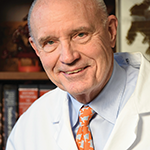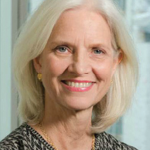Following Dr. Comroe’s premature death in 1945, Joseph L. Hollander, MD, who had served under Drs. Hench and Bauer at the Army and Navy Arthritis Center at Hot Springs, Ark., succeeded him. Initially titled, Comroe’s Arthritis and Allied Conditions, Dr. Hollander’s book continued to be the standard text for many years.
With the encouragement of family members of a patient with rheumatoid arthritis (often the case for many of the original rheumatology units), the Rackham Arthritis Unit was opened in 1937 at the University of Michigan. Richard Freyberg, MD, was selected to direct the unit. His first rheumatology fellow was Charley J. Smyth, MD. This rheumatologic unit contributed a great deal to the infant field of rheumatology. In 1944, Dr. Freyberg left Ann Arbor, Mich., to become physician in chief at the Hospital for Special Surgery in New York, and Dr. Smyth left in 1949 to develop the important rheumatology program at the University of Colorado in Denver.
Cleveland’s Role
Of particular interest to us, of course, is the role played by two Clevelanders in the evolution of American rheumatology. Russell L. Haden (1888–1952), MD, chief of medicine at the then-fledgling Cleveland Clinic from 1929–49, had broad medical interests, but took particular interest in the nascent field of rheumatology.8 He played a major role in the founding of the ACCR, which soon became the AASCR. He was installed as its first vice president, became its second president (1935–36) and was part of the planning committee for the landmark 1934 Cleveland meeting, over which he presided. Dr. Haden likely played a major role in writing the “What Is Rheumatism” pamphlet, and was the final editor of the second Rheumatism Primer. In an influential 1930 paper titled, “Types and Treatment of Chronic Rheumatism,” Dr. Haden discussed two types of chronic rheumatism: atrophic and hypertrophic.9
An extremely important contribution of Dr. Ragan’s unit was the rediscovery of rheumatoid factor in 1948. (Originally described by Dr. Waller in Norway in 1940, that finding was lost in the shuffle during World War II.)
Robert M. Stecher, MD (1896–1972), whose mother developed rheumatoid arthritis in about 1930, shortly concluded that not much was really known about arthritis and decided to devote his life to the study of rheumatic diseases. In 1935, he established a small arthritis clinic at the Cleveland City Hospital, a small public hospital for medically indigent people (currently MetroHealth Medical Center). Like Dr. Haden, Dr. Stecher attended the first public meeting of the AASCR in 1932. He served as president of the ARA in 1947–48 and as president of the Ligue Internationale Contre le Rhumatisme from 1953–57. He and his collaborators described the role of heredity in four rheumatic diseases a half century ahead of their time.10 In 1954, he was awarded the Heberden medal after delivering the Heberden Oration in London; his topic, appropriately—Heberden’s Nodes.11
The Infant Grew Up
In 1971, the American Board of Internal Medicine approved rheumatology board certification, but adult rheumatology fellowship programs did not receive accreditation by the Accreditation Council for Graduate Medical Education until 1987.12 In 1985, the ARA formally separated from the Arthritis Foundation, with which it had merged in 1965, and renamed itself the American College of Rheumatology (ACR).



